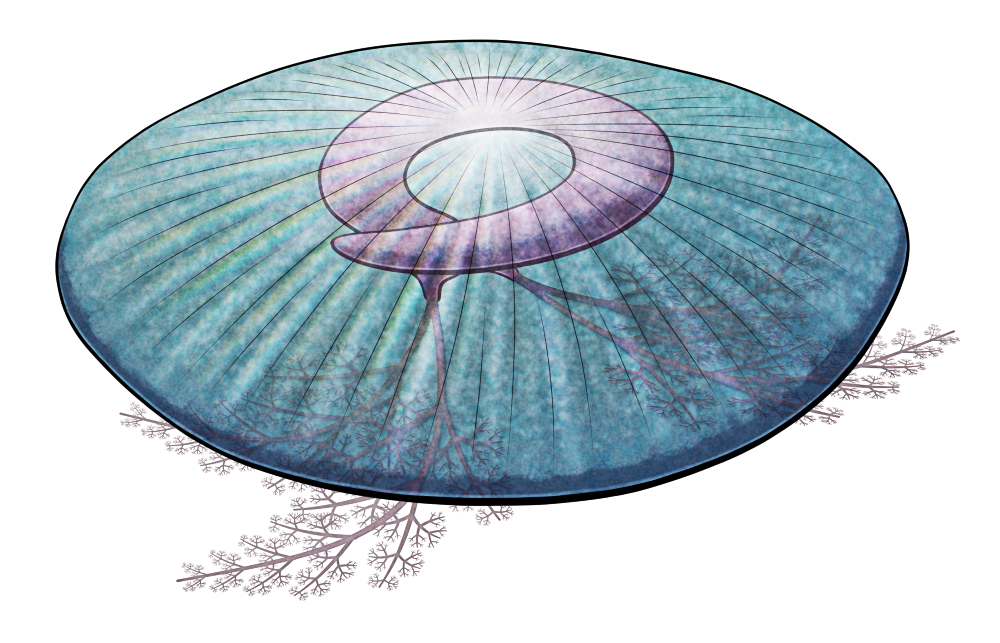Fossils of cambroernids were first discovered in the early 1900s, but these Paleozoic animals were so confusing that for a long time their evolutionary relationships were a mystery.
They had coiled bodies and fractal-branching feeding tentacles, and they ranged in shape from worm-like to cup-like to disc-like. Historically various species were classified as sea cucumbers, jellyfish, tunicates, gnathiferans, or lophophorates, but more recently they’ve been recognized as a single united lineage of ambulacrarians, closely related to modern echinoderms and hemichordates.
Discophyllum peltatum lived during the late Ordovician, about 458-448 million years ago, in what is now New York, USA. Up to around 11cm in diameter (~4.3″), it was one of the disc-shaped cambroernids – a lineage known as eldoniids – with a shallow domed body containing a clockwise-coiling sac and delicate feeding tentacles around its mouth.
Its disc would have been tough but flexible, containing numerous supporting radial structures that were probably part of a fluid-filled hydrostatic skeleton, giving it an almost-radially-symmetric body plan superficially resembling a jellyfish.
The lifestyle of eldoniids is still uncertain, but they seem to have mostly sat on the seafloor, possibly extending their tentacles out from under their discs to grab nearby food.

